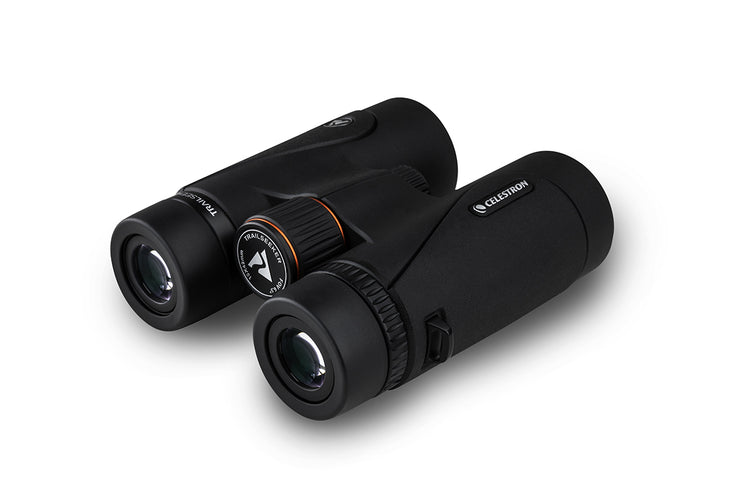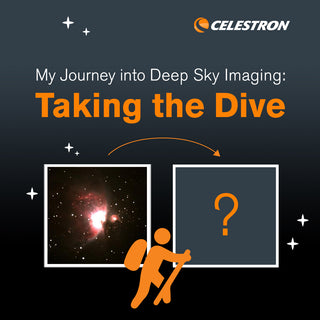MAY MOONPHASED: TOP 10 FEATURES ON THE MOON TO OBSERVE AND IMAGE
May 4, 2016

Our Moon is mysterious. Throughout history it has lured artists, poets, explorers, scientists, and romantics into modes of thought and feeling that has shaped our attitudes and industry in myriad ways. #MissionMoon2016 is Celestron’s attempt to examine this relationship with the Moon in fun and educational ways in a casual, social arena, but there is one important aspect we have yet to cover: the Phases of the Moon.
Possibly the most curious occurrence in all the night sky to ancient peoples, early astronomers, and just about everyone else is the changes we see in the Moon’s appearance from Earth on a monthly basis. Join Celestron in May to dig a bit deeper into the geometry, geology, and human fascination with the phases of the Moon AND learn how and when to best observe and image these transitions in the Moon’s Top 10 Features. So pull up a blanket on a scenic hill or bust out your scopes, Skyris/DSLR/smartphone cameras and let’s get MOONPHASED! Be sure to tag @celestronuniverse and #MissionMoon2016
* Remember that the Moon is basically “ball-shaped”. So when you’re observing it, think of it as a ball to intuitively grasp where it is in relation to the Sun / light source since that is what is causing the particular phases.
* The Sun, Moon, and planets all lie on a more or less flat plane. Since the Earth tilts in relation to it, we see the bodies in the solar system drift across the night sky in a southerly arc from east to west (Northern Hemisphere). The Moon lies just off the ecliptic lining up periodically for eclipses.
* Because of tidal locking the Moon always shows its same face to Earth.
* The “terminator” is the line separating sunset and sunrise on the Moon and casts craters and mountains in high relief. “Earthshine” is the dark portion of the Moon made visible from reflected Sunlight bouncing off Earth.

Another one for observers or specialty shooters looking to set themselves apart from the pack is the Moon a few days just after the “new” phase. A new Moon lies just off the direct line of sight from Earth to the Sun and is basically invisible as its far facing side is “full” and would appear so to inferior planets Venus and Mercury. The next few days provide spectacular views of the crescent Moon setting just after the Sun while the sky is still ablaze in oranges, pinks, and yellows. Image this Moon with the landscape or through a telescope to highlight the terminator and Earthshine. Shoot May 6-9
Challenge: Shoot a landscape Moonset, a properly exposed light side, and/or a properly exposed dark side
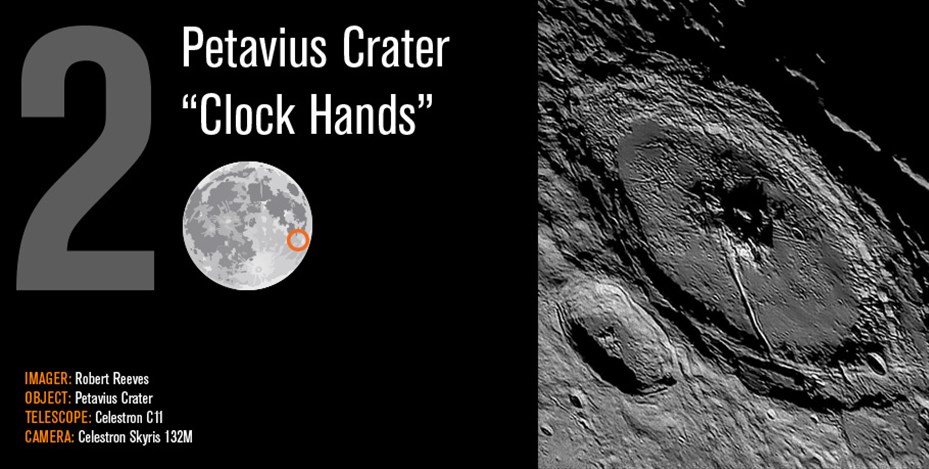
When the Moon is just 3 days old in waxing crescent, a marvelous and often overlooked feature lights up in the shadows of the Petavuis crater near the bottom right portion of the Moon. About 110 miles in diameter, the crater sports a central peak with two cracks or rilles extending outward resembling a clock face that can read about a quarter to 12. Shoot around May 8
Challenge: Properly expose both clock hands

The beautiful and striking Plato crater is a favorite target for lunar imagers for its smooth crater floor, nearby surface cracks and rilles, and its proximity to the Alps mountain range with its characteristic valley that slices through. Image this crater around first quarter (half Moon) when the Moon is about 7-9 days old for the best contrasting shadows. Shoot around May 12-14
Challenge: Catch the Alpes Mountains with sharp shadow, resolve the rille running through Alpes valley.
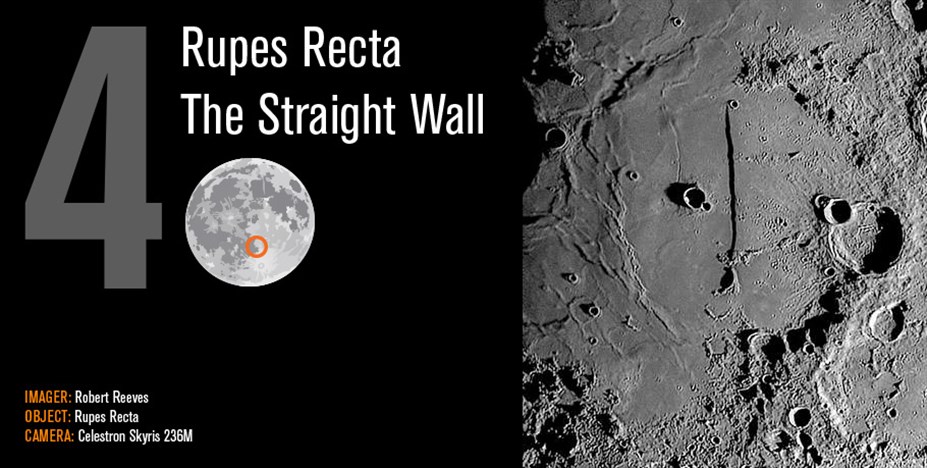
The Straight Wall, or Rupes Recta near Birt crater is a fascinating subject to observe and image. Really only an arresting sight for a night or two, this elusive “wall” looks like a straight cliff in high relief, it is actually 2-3km wide and about 250m tall. Seen around day 8, near first quarter of the lunar day the wall can give off a black or bright white glow fascinating onlookers. Shoot around May 12
Challenge: Try for those deep craters and long shadows off the peaks
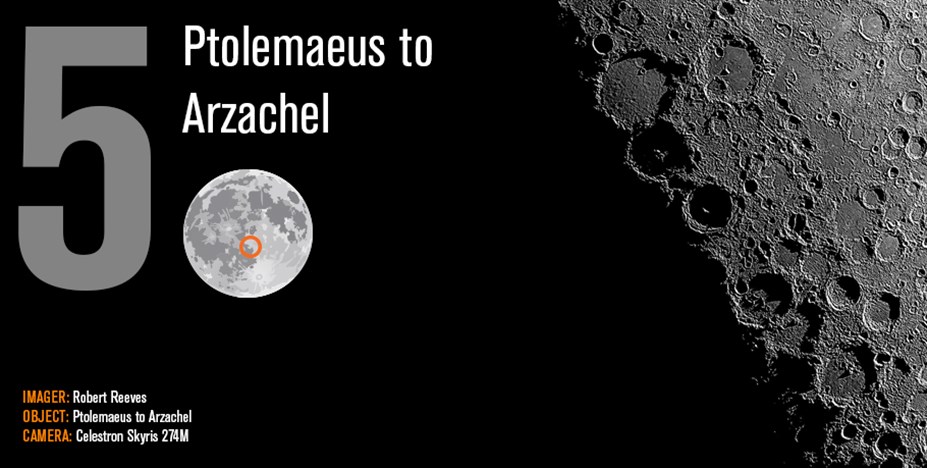
In Ptolemeus crater, we are actually able to observe the curvature of the lunar surface. 154km across, Ptolemeus sports saw tooth shadows from the crater walls the creep along the bulging floor. Just to the south, Alphonsus and Arzachel craters feature dynamic central peaks that make this trio a must see, must shoot for observers and imagers. Shoot May 12-14
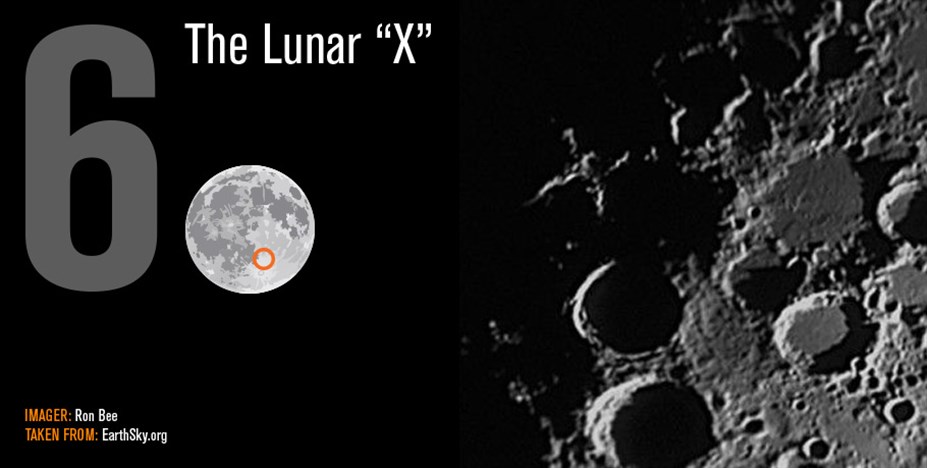
The so-called Lunar X is an arresting and ephemeral feature that only shows itself around the first quarter phase near the craters La Caille, Blanchinus, and Purbach located at the top of the lower third portion of the Moon, right of center. The X last for only about 4 hours so plan accordingly to observe or image this illusive prey. Shoot May 13 6pm PDT
Challenge: Shoot the Lunar X and then hunt for the Lunar V
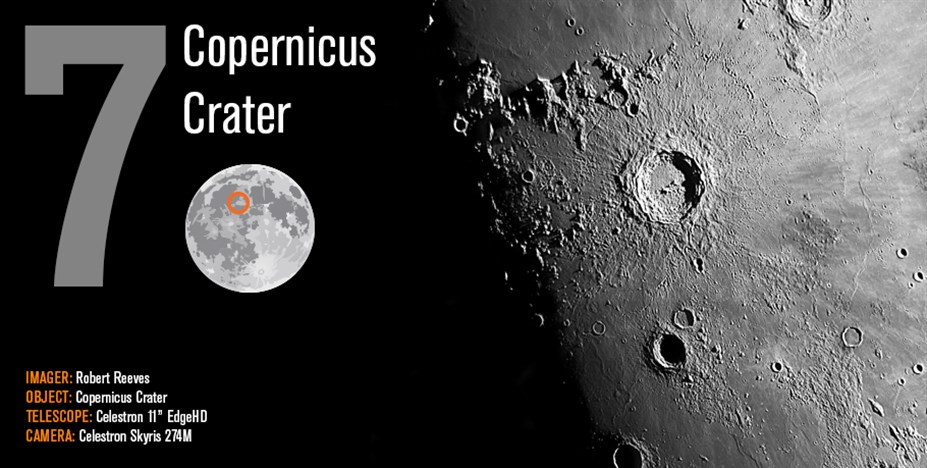
Copernicus crater is often an early favorite for new astroimagers as it sits in the middle of an extravagant system of crater rays. Huge and nebulous, the rays waft out 800km over the surrounding maria and craters. Copernicus sports multiple central peaks easily resolved in a modest telescope. Use the Sunlight to highlight the shadows of the peaks or the crater walls. Shoot May 14-16
Challenge: Compose the shot to highlight the central peaks, crater walls, AND crater rays
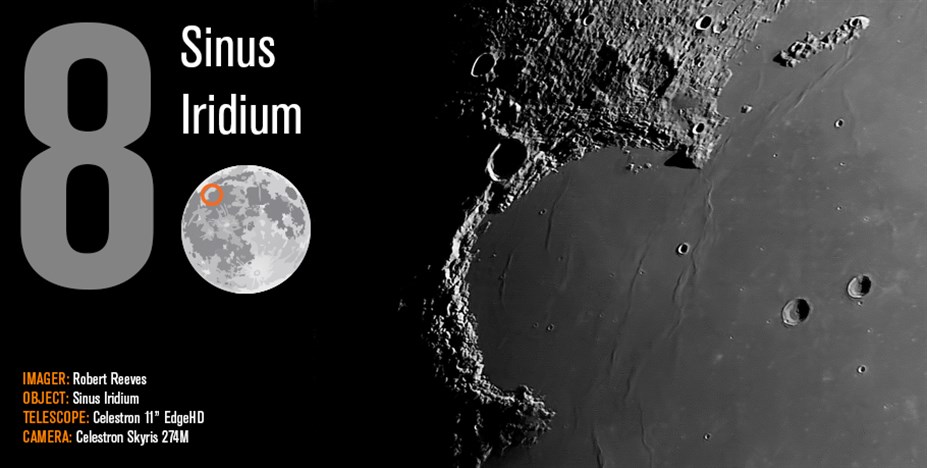
A classic feature on the Moon, Sinus Iridium and the adjoining Jura mountains that form this lava bay can actually be seen by the naked eye. Do to the sheer size, large scale structure, and the high contrast occasioned by steep angles of Sunlight, Sinus Iridium is a perfect target to come back to month after month. Shoot May 15 and 16
Challenge: Image the mountains lit up in the surrounding darkness

The famous Tycho crater is one of the brightest areas on the Moon and easily seen with the naked eye. Of any specific feature besides the maria, this crater with its enormous system of crater rays seems to be the most depicted in artistic representations (movies, TV, commercials, art, etc.). The rays themselves extend some 1500km and can even be seen and imaged in Earthshine just after the new Moon. Image after May 15
Challenge: Shoot Tycho in Sunlight and in Earthshine
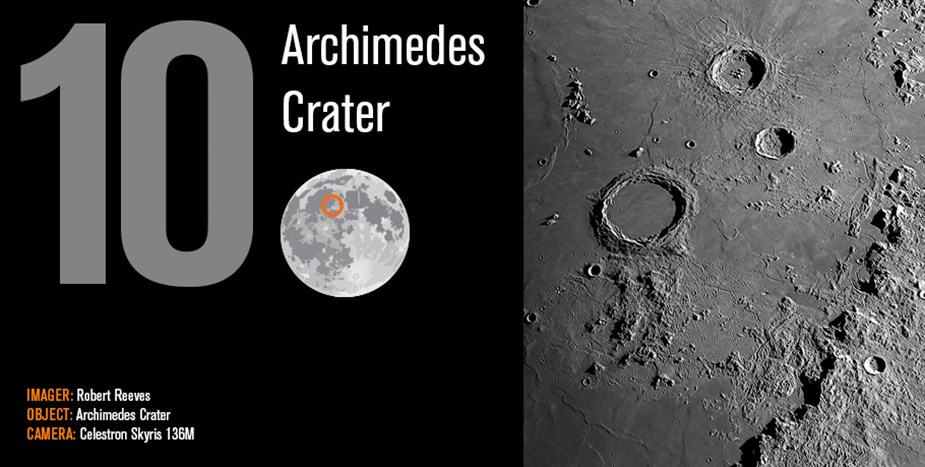
Tucked deep into Mare Imbruim and bounded by the gorgeously enormous Apennine Mountains, Archimedes crater is supremely smooth in its center due to lava upwelling from the surface. The rim of the walls is extremely bright sloping off into the mare in surround which makes for striking views and images. Image around May 12-14
Challenge: Shoot a bright crater wall and include the Apennine Mountain range
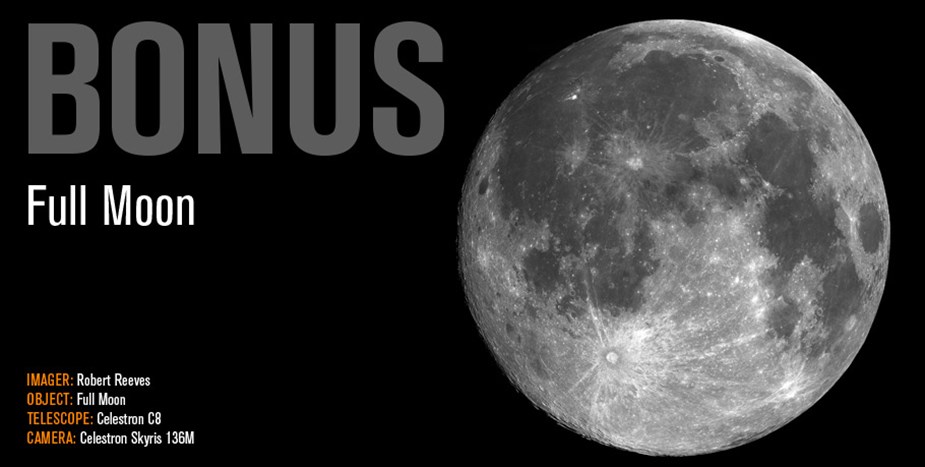
We call the Moon “full” when its entire face is lit from our perspective on Earth. The full Moon lies opposite the Sun in the sky about 15 days after the new Moon. Surprisingly to many beginners, the full Moon actually yields the least interest to most lunar imagers and the least detail to observers. Observe the full Moon each month as it rises and photograph it with some interesting land or cityscapes to experience and capture its real beauty. Or, shoot a multi-panel mosaic for exquisite detail on a large scale. Shoot May 20 and 21
Challenge: Shoot a full Moon image through your telescope, download the Phases of the Moon app, and/or shoot a Moonrise time lapse








